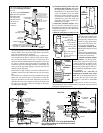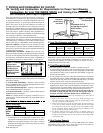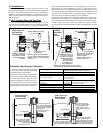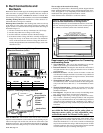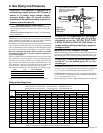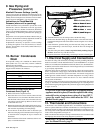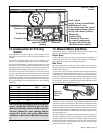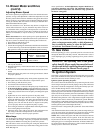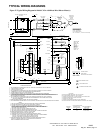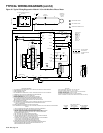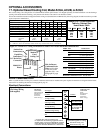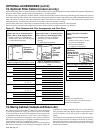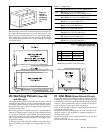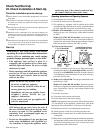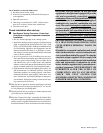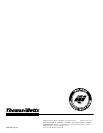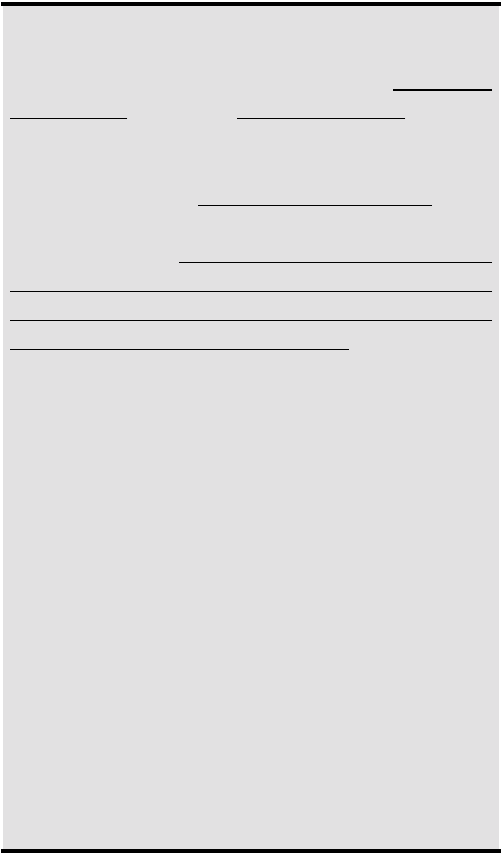
Mfg No. 164771, Page 23
DANGER: The gas burner in this gas-fired
equipment is designed and equipped to provide
safe and economically controlled complete
combustion. However, if the installation does not
permit the burner to receive the proper supply of
combustion air, complete combustion may not
occur. The result is incomplete combustion which
produces carbon monoxide, a poisonous gas that
can cause death. Safe operation of indirect-fired
gas burning equipment requires a properly
operating vent system which vents all flue
products to the outside atmosphere. FAILURE TO
PROVIDE PROPER VENTING WILL RESULT
IN A HEALTH HAZARD WHICH COULD
CAUSE SERIOUS PERSONAL INJURY OR
DEATH.
If installed as a separated-combustion unit, install
either the horizontal or vertical combustion air/
vent system illustrated in Paragraph 7A using the
concentric adapter supplied. Always comply with
the combustion air requirements in the installation
codes and instructions. Combustion air at the
burner should be regulated only by manufacturer-
provided equipment. NEVER RESTRICT OR
OTHERWISE ALTER THE SUPPLY OF
COMBUSTION AIR TO ANY HEATER.
CHECK THE VENT SYSTEM FOR
SOUNDNESS AND FUNCTION; MAINTAIN IT
IN PROPER OPERATING CONDITION.
TO TURN OFF GAS TO THE APPLIANCE
1) Set thermostat to lowest setting
2) If service is to be performed, turn off all electric power
to the appliance.
3) Open the access door.
4) Turn the gas control knob to "OFF" (follow instruc-
tions in No. 4 above). Do not force control knob.
5) Close the access door.
Check installation after start-up:
%&%&
%&%&
%&
Vent System Testing Procedure - Power Vent
Units (does not apply to separated-combustion
installation)
1. Seal any unused openings in the venting system.
2. Inspect the venting system for proper size and horizontal
pitch, as required in the National Fuel Gas Code, ANSI
Z223.1 or CAN/CGA B149.1 and B149.2, Installation Code
for Gas Burning Appliances and Equipment, and this
manual. Determine that there is no blockage or restric-
tion, leakage, corrosion and other deficiencies which could
cause an unsafe condition.
3. In so far as practical, close all building doors and win-
dows and all doors between the space where the heater is
and other spaces of the building. Turn on clothes dryers
and exhaust fans, such as range hoods and bathroom
exhausts, so they shall operate at maximum speed. Do not
operate a summer exhaust fan. Close fireplace dampers.
4. Light the heater following the lighting instructions. Ad-
just the thermostat for continued operation. Verify that
combustion products are venting properly. After deter-
mining that the heater vents properly, return doors, win-
dows, exhaust fans, and fireplace dampers to their previ-
ous conditions. If improper venting is observed, the vent-
ing system must be corrected.
%With the unit in operation, measure manifold gas pressure.
Manifold pressure for natural gas should be 3.5" w.c. and 10"
w.c. for propane gas. See Paragraph 9.
%Turn the unit off and on, pausing two minutes between each
cycle. Observe for smooth ignition.
%Place the "Owner's Envelope" containing the Limited War-
ranty, this booklet, the operation/maintenance/service manual,
and any control or optional information in an accessible loca-
tion near the heater. Follow the instructions on the envelope.



